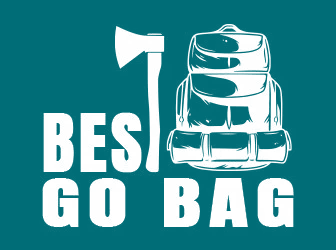They knew it was coming. And they knew it was going to be bad. It did come. And it was bad. In fact, it was even worse than many of the most dire predictions foretold.
Of course, I’m talking about Hurricane Ida. The dangerously strong Category 4 storm made landfall at Port Fourchon, Louisiana on August 29. Exactly 16 years after Category 3 Hurricane Katrina struck the Bayou State.
Maximum sustained winds were recorded at 150 miles per hour. With one gust measured at 172 mph. Other measurements included 136 mph at Grand Isle. The town was later described by city officials as “uninhabitable.”
Scooter Resweber is the police chief in Grand Isle. He said, “I’ve ridden out other hurricanes. Hurricane Isaac, Katrina, Gustav, Ike. This is the worst.”
A helicopter pilot flying over some of the hardest hit areas said this. “I think this is the worst damage this area has ever received. And I don’t think it will ever be the same again.”
Mississippi River Flow Reversed
Catastrophic storm surge and hours of highly destructive winds turned southern Louisiana into a flooded wasteland. Including roofs torn off buildings. In Jefferson Parrish, nearly every home had damaged or missing roofs.
Winds were so strong they temporarily reversed the flow of the Mississippi River. Ida was the fifth strongest hurricane in recorded history to hit the U.S. mainland.
As of this writing, four people have died due to Ida. More than 1 million customers lost power in the state plus another 113,000 in Mississippi. More than 80 million Americans faced flood risks along the storm’s path.
Accuweather.com predicted that a 1,200-mile stretch would face significant flood damage. From Louisiana to Massachusetts. The storm started numerous fires, and tornadoes were a serious threat.
‘Worst Possible Path for a Hurricane’
John Bel Edwards is the Louisiana governor. Here’s what he said. “If you had to draw up the worst possible path for a hurricane in Louisiana, it would be something very, very close to what we’re seeing.
“Obviously Hurricane Ida packed a very powerful punch. She came in and did everything that was advertised, unfortunately.”
The torrential downpours brought by Ida totaled more than a foot in some areas. The rain caused a 50-foot stretch of highway in Mississippi to collapse. Resulting in two deaths and 10 injuries after vehicles plunged into a hole.
Rainfall amounts included 18 inches in Lake Pontchartrain (New Orleans). Plus 15.7 inches in Slidell, Louisiana and 10.4 in Bay St. Louis, Mississippi. Approximately 95 percent of oil production in the Gulf of Mexico shut down.
Rescues Via Boats, Helicopters and Trucks
Those who evacuated from the New Orleans area were told to hold off on returning. That was due to power outages and widespread debris. Including toppled trees, downed power lines and shattered glass.
Dozens of barges broke away near New Orleans. Including one that struck a bridge.
Backup generators were needed in Louisiana hospitals. That’s where 2,500 patients were being treated for COVID-19. Including some on ventilators requiring electricity.
Immediately after the storm moved out of New Orleans, more than 1,000 rescues took place. In boats, helicopters and high-water trucks. Many people had climbed onto roofs and into attics to avoid floodwaters.
Those able to use cellphones were pulled from numerous locations. And taken to safety. Those without cellphone service were less fortunate. AT&T estimated that 40 percent of its network in Louisiana was down.
Help Pours in From Neighboring States
Louisiana residents who rode out the storm were told to boil their water. Until further notice. Water systems in many areas were either limited or knocked out of service. Residents were asked to conserve water in case firefighters needed it.
More than 5,000 members of the National Guard were activated. From Louisiana, Mississippi, Alabama and Texas. They supported search, rescue and recovery efforts.
In addition, 3,600 FEMA employees were deployed. The agency had staged more than 3.4 million meals and millions of liters of water prior to the storm’s landfall.
Plus 35,700 tarps and 200 generators. Texas sent firefighters and fire trucks to assist.
No Power in Sweltering Heat
Once the storm finally passed and flooding subsided, a different problem took center stage. Entergy is Louisiana’s largest electric provider. Officials estimated that those living in southeastern Louisiana might be without power for weeks. Maybe a month.
That was due to damage sustained by major transmission lines. The storm disabled 216 substations and 207 transmission lines extending 2,000 miles. One electrical tower that withstood Katrina 16 years ago was destroyed by Ida.
This means no air conditioning and no refrigeration without backup power. And no gasoline for those owning gas-powered generators. Hundreds of thousands are sweltering in the heat.
Deanna Rodriguez is president and CEO of Entergy New Orleans. “This will be a marathon, not a sprint,” she said. “We must all be prepared for the recovery to take some time.”
Our hearts go out to all those affected by Hurricane Ida. We find ourselves hoping and praying daily for their recovery.


